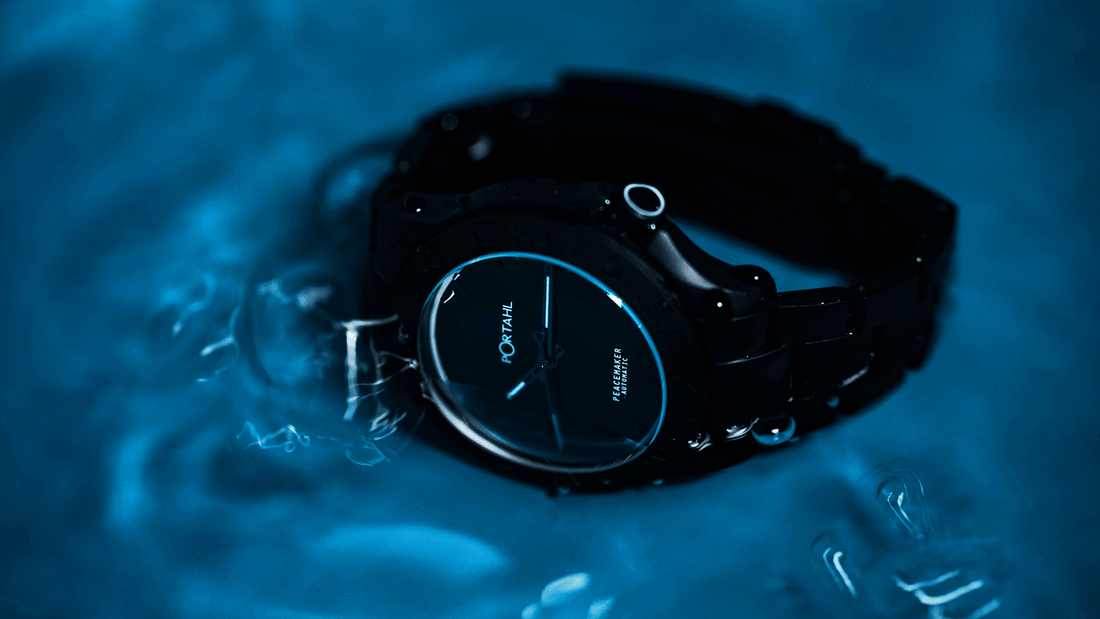
Is Your Watch Waterproof or Just Water-Resistant? Find Out Now!
If you own a watch, it's important to know whether it is waterproof or just water-resistant. Waterproof watches can be fully submerged in water, while water-resistant watches can only withstand splashes or brief immersions. In this article, we'll explain the difference between waterproof and water-resistant watches and give you tips on how to care for your timepiece to ensure its water resistance stays intact. Keep reading to learn more!
What Does Water-Resistant Mean?
When a watch is labeled as water-resistant, it means that it can withstand some exposure to water, but it is not completely sealed against it. Water-resistant watches are designed to withstand splashes of water, sweat, and rain, but they should not be submerged in water. The level of water resistance is usually indicated by a number on the watch face or case back, such as 30 meters, 50 meters, 100 meters, etc. This number refers to the watch's ability to withstand pressure, and it does not simply correspond to the depth at which the watch can be worn.
For example, a watch labeled as "50 meters water-resistant" can withstand splashes of water and brief immersions in shallow water, but it should not be worn while swimming or diving. On the other hand, a watch labeled as "100 meters water-resistant", such as our Peacemaker watch, can withstand more exposure to water and can be worn while swimming and snorkeling, but it may not be suitable for deep sea diving.
What Does Waterproof Mean?
If a watch is completely water-resistant and can withstand being fully submerged in water without suffering any damage, it is said to be waterproof. Usually, watches that claim to be waterproof are tested to survive longer submersion times and greater depths. A dive watch, for instance, might be tested to endure prolonged submersion at depths of at least 100 meters. Swimming, diving, and snorkeling are all sports that are suited for waterproof watches.
It's significant to note that no watch can be entirely waterproof, hence the term "waterproof" is not recognized by international standards organizations. Instead, the ability of a watch to survive water to a certain level is referred to as being "water-resistant." In the watch industry, though, the term "waterproof" is still frequently used.
How to Care for Your Water-Resistant or Waterproof Watch
To ensure a lasting water resistance of your watch, it's important to follow a few simple guidelines:
- Avoid exposing your watch to extreme temperatures, as this can cause the seals to become brittle and break.
- Avoid exposing your watch to harsh chemicals, as this can cause damage to the seals and the case.
- If your watch has a screw-down crown, be sure to screw it down tightly before exposing it to water.
- Have your watch checked and serviced regularly by a professional. This will ensure that the seals and gaskets are in good condition and that the watch is functioning properly.
By following these simple guidelines, you can help extend the life of your water-resistant or waterproof watch and keep it functioning properly for years to come.
Conclusion
In conclusion, it's important to know whether your watch is waterproof or just water-resistant. Waterproof watches can be fully submerged in water, while water-resistant watches can only withstand splashes or brief immersions. To ensure the water resistance of your watch, it's important to follow a few simple guidelines and have it serviced regularly by a professional. By understanding the difference between waterproof and water-resistant watches and properly caring for your timepiece, you can enjoy all of the features and functions of your watch for years to come.
